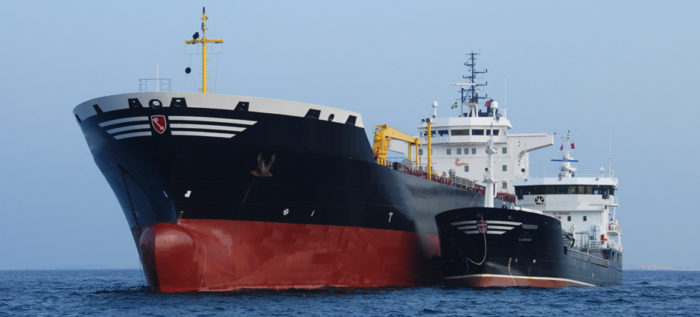War Story: Under Pressure
Link to article: https://stillwaterassociates.com/war-story-pressure/
October 11, 2017
By Jessica Loomis

Image: World Oil Traders
In the late 1990s, Stillwater Senior Associate James Ahrens was working in the crude oil supply, trading, and transportation division at Mobil as a supply optimization coordinator for the Beaumont refinery. The fuels crude unit at the refinery typically ran a slate of heavy sour crude oil that left the top of the atmospheric distillation tower unloaded. To fill this spare capacity and generate feed for the reformers, cargos of light crude and condensate were brought in for processing. This strategy was often called a “dumbbell” crude slate for its very heavy and very light components.
During this time, they received routine shipments of light crude and condensate from West Africa on very large crude carriers (VLCCs), and James recalls an incident when it was discovered that a cargo of condensate already loaded and on the water had a Reid vapor pressure (RVP) well above what was allowed at the discharge terminal. Typically, samples of the crude or condensate were captured and tested for basic properties prior to loading, but it was not until about week into the three-week journey to the U.S. Gulf Coast that the high RVP reading was flagged by the discharge terminal operator.
Not wanting to make a distressed sale on 1 million barrels of off-spec material, they tried everything to get the pressure down, even going so far as to open the hatches of the vessel while underway to “weather” the light ends off. Once the VLCC reached the Caribbean, the cargo was resampled, but the RVP was still too high. Anticipating this was going to be the case, a second vessel had been chartered and loaded with a cargo of heavy, low RVP crude and was sailing to meet the VLCC in the Caribbean to attempt a ship-to-ship blending operation to reduce the condensate RVP. Unfortunately, RVP is one of those properties that just doesn’t blend well in a static tanker compartment without mixers, so it took three pumping attempts before the cargo reached an acceptable RVP level. By this time, the shipment was weeks late, and Mobil had spent several million dollars fixing the problem.
Once things had calmed down, James and his colleagues performed a root-cause analysis and discovered that the production facility from which the crude was shipped had taken the debutanizer (which extracts light ends such as propane and butane to get the vapor pressure under control) out of service because it was in disrepair. Unfortunately, they didn’t tell anybody about the issue, and the loss Mobil took as a result was enormous. (And this was when crude was only $20/barrel!) As a result, communications between the exploration and production team and the crude supply team were drastically improved to avoid a similar highly pressurized situation in the future.
Categories: News, War Stories
